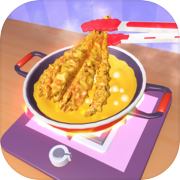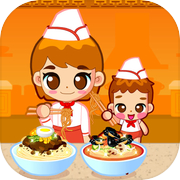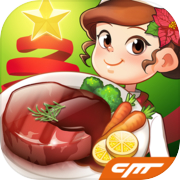Korean Food Quiz: Fun Game

Hangover stew (해장국)
Given South Korea’s dedicated drinking culture, it’s not surprising that its hangover-curing culture is equally as developed, from pre-drinking drinks to post-drinking drinks to a glorious array of spicy and steamy stews and soups.
Made from a beef broth, with cabbage, bean sprouts, radish and chunks of congealed ox blood, the deeply satisfying taste does wonders to kick-start your sluggish brain in the morning.
Kimchi (김치)
Dating to the Silla Dynasty (around 2,000 years ago), kimchi is the beloved spicy sidekick at every Korean table. It’s made by salting and preserving fermented cabbage in a bed of red chilli pepper, garlic, ginger and scallion.
Feeling adventurous? Exchange your regular red cabbage kimchi for ggakdugi (chopped radish kimchi), a popular side at gimbap restaurants.
Yeolmumul kimchi is a less spicy kimchi made with young radish stalks floating in a tangy soup.
Soft Tofu Stew (순두부찌개)
Soft tofu, clams and an egg in spicy broth? This popular stew is a classic example of unexpected flavor combinations yielding delightful sensations.
The soft tofu – which breaks into fluffy chunks in the stew – holds the flavor of the clam and serves as a relief from the overall spiciness.
Proper sundubu-jjigae comes in a traditional earthenware pot designed to retain heat. The egg is cracked into the stew after serving, and cooks inside the bowl.
Samgyeopsal (삼겹살)
Every samgyeopsal feast is a rollicking party.
Every samgyeopsal feast is a rollicking party.
courtesy Korean Tourism Organization
Samgyeopsal is the Korean word for pork belly, and it’s a staple at what many Westerners know simply as Korean BBQ restaurants.
The best part of eating in a samgyeopsal restaurant is the atmosphere – a rollicking party punctuated by soju shots, pork strips sizzling on a grill and shouts for “one more serving, please!”
Served with lettuce, perilla leaves, sliced onions and raw garlic, the meat is smudged in ssamjang (a mix of soybean paste called ‘doenjang’ and chili paste called ‘gochujang’) or salt and pepper in sesame oil.
7 super spicy South Korean dishes -- and tips for eating them
Jjajangmyeon (짜장면)
Although originally a Chinese dish, Koreans have taken the noodles and created a thicker, sweeter version that holds only a vague resemblance to its Chinese predecessor. (Think of New Yorkers and the wonders they’ve done with pizza.)
It would not be an understatement to say Korean diets would not be the same without this dish – most Koreans eat it regularly, and have their favorite jjajangmyeon delivery shop on speed dial.
Instant noodles (라면)
Anyone can follow the directions on the back of the ramyeon package to boil water and sprinkle in the spice packet, but connoisseurs will add extras like canned tuna, eggs, and cheese for enhanced flavor.
Kimchi Stew (김치찌개)
A lesser-known fact about kimchi is its versatility as an ingredient in a whole slew of derivative dishes, which comprise a category of their own.
In kimchi-jjigae, red cabbage kimchi is chopped, sauteed in oil, and cooked with tofu, pork (sometimes tuna), and other vegetables.
Despite the stew’s debt to kimchi, you know it has come into its own when it’s served with kimchi as a side dish.
North Korea's latest peace offering: Kimchi
Army Stew (부대찌개)
This hodgepodge stew of sausages, Spam, American cheese, instant noodles, tteok, and assorted vegetables dates back to the aftermath of the Korean War.
Because meat was scarce, cooks found creative replacements in the surplus foods from the American army base stationed in Seoul, hence the stew’s name.
Although meat has since then become plentiful, a buddae jjigae without Spam is unimaginable.
Soy sauce crab (간장게장)
Ganjang gejang, or crab marinated in soy sauce, can be so addictive that it’s often affectionately called “rice thief,” the joke being that you keep eating more rice just so that you can have more gejang since it’s just that good.
Tteokbokki (떡볶이)
Chimaek (치맥)
Given South Korea’s dedicated drinking culture, it’s not surprising that its hangover-curing culture is equally as developed, from pre-drinking drinks to post-drinking drinks to a glorious array of spicy and steamy stews and soups.
Made from a beef broth, with cabbage, bean sprouts, radish and chunks of congealed ox blood, the deeply satisfying taste does wonders to kick-start your sluggish brain in the morning.
Kimchi (김치)
Dating to the Silla Dynasty (around 2,000 years ago), kimchi is the beloved spicy sidekick at every Korean table. It’s made by salting and preserving fermented cabbage in a bed of red chilli pepper, garlic, ginger and scallion.
Feeling adventurous? Exchange your regular red cabbage kimchi for ggakdugi (chopped radish kimchi), a popular side at gimbap restaurants.
Yeolmumul kimchi is a less spicy kimchi made with young radish stalks floating in a tangy soup.
Soft Tofu Stew (순두부찌개)
Soft tofu, clams and an egg in spicy broth? This popular stew is a classic example of unexpected flavor combinations yielding delightful sensations.
The soft tofu – which breaks into fluffy chunks in the stew – holds the flavor of the clam and serves as a relief from the overall spiciness.
Proper sundubu-jjigae comes in a traditional earthenware pot designed to retain heat. The egg is cracked into the stew after serving, and cooks inside the bowl.
Samgyeopsal (삼겹살)
Every samgyeopsal feast is a rollicking party.
Every samgyeopsal feast is a rollicking party.
courtesy Korean Tourism Organization
Samgyeopsal is the Korean word for pork belly, and it’s a staple at what many Westerners know simply as Korean BBQ restaurants.
The best part of eating in a samgyeopsal restaurant is the atmosphere – a rollicking party punctuated by soju shots, pork strips sizzling on a grill and shouts for “one more serving, please!”
Served with lettuce, perilla leaves, sliced onions and raw garlic, the meat is smudged in ssamjang (a mix of soybean paste called ‘doenjang’ and chili paste called ‘gochujang’) or salt and pepper in sesame oil.
7 super spicy South Korean dishes -- and tips for eating them
Jjajangmyeon (짜장면)
Although originally a Chinese dish, Koreans have taken the noodles and created a thicker, sweeter version that holds only a vague resemblance to its Chinese predecessor. (Think of New Yorkers and the wonders they’ve done with pizza.)
It would not be an understatement to say Korean diets would not be the same without this dish – most Koreans eat it regularly, and have their favorite jjajangmyeon delivery shop on speed dial.
Instant noodles (라면)
Anyone can follow the directions on the back of the ramyeon package to boil water and sprinkle in the spice packet, but connoisseurs will add extras like canned tuna, eggs, and cheese for enhanced flavor.
Kimchi Stew (김치찌개)
A lesser-known fact about kimchi is its versatility as an ingredient in a whole slew of derivative dishes, which comprise a category of their own.
In kimchi-jjigae, red cabbage kimchi is chopped, sauteed in oil, and cooked with tofu, pork (sometimes tuna), and other vegetables.
Despite the stew’s debt to kimchi, you know it has come into its own when it’s served with kimchi as a side dish.
North Korea's latest peace offering: Kimchi
Army Stew (부대찌개)
This hodgepodge stew of sausages, Spam, American cheese, instant noodles, tteok, and assorted vegetables dates back to the aftermath of the Korean War.
Because meat was scarce, cooks found creative replacements in the surplus foods from the American army base stationed in Seoul, hence the stew’s name.
Although meat has since then become plentiful, a buddae jjigae without Spam is unimaginable.
Soy sauce crab (간장게장)
Ganjang gejang, or crab marinated in soy sauce, can be so addictive that it’s often affectionately called “rice thief,” the joke being that you keep eating more rice just so that you can have more gejang since it’s just that good.
Tteokbokki (떡볶이)
Chimaek (치맥)
Available on devices:
- Android
- Smart TV






























































